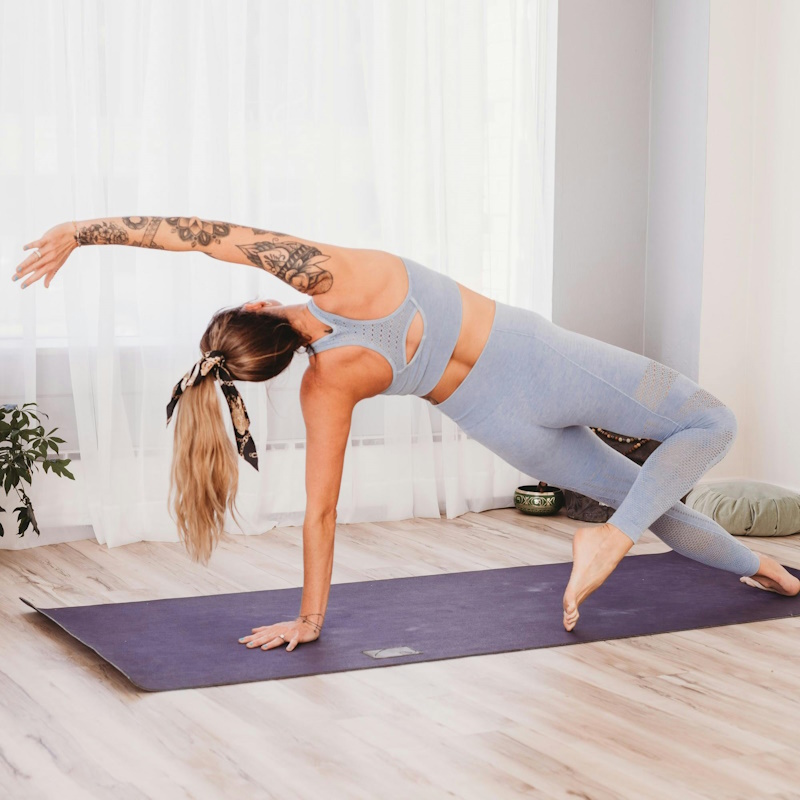Pilates, often misunderstood as just another fitness trend, is a holistic approach to health and wellness that has been around for nearly a century. Rooted in the principles of core strength, flexibility, and body awareness, it offers a gentle yet effective way to improve your physical and mental well-being. In this comprehensive guide, we’ll explore the introduction to Pilates, provide a brief description of the practice, discuss how beginners can get started, and share some valuable insights I’ve gained over the years as a Pilates enthusiast and expert.
What is the Introduction of Pilates?
The introduction to Pilates begins with understanding its origins and core principles. Developed by Joseph Pilates in the early 20th century, Pilates was initially called “Contrology.” Joseph Pilates believed that the mind and body are interconnected, and he designed this exercise method to create a balanced, flexible, and strong physique. Central to Pilates is the belief that physical fitness is the first requisite of happiness, and the practice was developed to improve overall health.
Pilates focuses on various key principles, including:
1. Breathing: Proper breathing techniques are crucial in Pilates. It’s about controlled, conscious breathing to enhance the mind-body connection.
2. Centering: The core, often referred to as the “powerhouse,” is the focal point of Pilates exercises. Strengthening this area is fundamental.
3. Control: Pilates is all about controlled and precise movements. It emphasizes quality over quantity.
4. Concentration: Each movement should be done with full concentration, promoting body awareness.
5. Precision: Every exercise is performed with attention to detail, emphasizing form and alignment.
6. Flow: The movements in Pilates are designed to flow smoothly from one to the next, promoting flexibility and grace.
7. Isolation: Exercises target specific muscle groups, allowing you to work on individual areas of the body.
What is the Brief Description of Pilates?
Pilates is a low-impact exercise system that can be adapted to various fitness levels and needs. It doesn’t require intense cardiovascular effort, making it suitable for people of all ages and physical conditions. It’s characterized by a series of mat-based or equipment-based exercises that focus on strength, flexibility, and control. The core exercises can be modified to be more or less challenging, making it accessible to both beginners and advanced practitioners.
Pilates is known for its positive impact on posture, balance, and overall body awareness. It can help alleviate back pain, improve joint mobility, and enhance muscle tone. Furthermore, Pilates is an excellent tool for stress relief and promoting mental clarity. Its gentle yet effective approach to fitness makes it an ideal choice for those seeking to achieve a balanced, lean, and strong body.
How Do I Start Pilates for Beginners?
If you’re a beginner interested in starting Pilates, the best approach is to begin with the basics. Here are some steps to get you started:
1. Find a Qualified Instructor: To ensure that you learn Pilates correctly, consider enrolling in classes with a certified Pilates instructor. They can provide guidance and ensure that you perform exercises with proper form.
2. Choose Mat or Equipment Classes: Pilates can be done on a mat or with specialized equipment like the reformer. Mat classes are a good starting point for beginners, while equipment classes offer more resistance and can be adapted as you progress.
3. Start Slowly: Begin with foundational exercises that focus on core strength and flexibility. These exercises will help you build a strong base for more advanced movements.
4. Consistency is Key: Pilates is most effective when practiced regularly. Aim for a few sessions per week to see noticeable improvements in your strength and flexibility.
5. Listen to Your Body: Pay close attention to your body and how it responds to each exercise. If you experience pain or discomfort, it’s important to modify or stop the movement.
6. Set Realistic Goals: Define what you want to achieve with Pilates, whether it’s improved posture, flexibility, or overall fitness. Setting specific, achievable goals can help you stay motivated.
7. Enjoy the Journey: Pilates is not just about physical fitness; it’s also a mental practice. Embrace the process and enjoy the journey of self-improvement.
What Have You Learned About Pilates?
Over the years, I’ve learned that Pilates is not just a workout; it’s a way of life. It promotes overall well-being, and its principles can be applied to various aspects of daily living. Here are some valuable insights I’ve gained about Pilates:
1. Mind-Body Connection: Pilates teaches us to connect with our bodies on a deep level. It’s about being fully present during each movement, which carries over into increased mindfulness in daily life.
2. Versatility: Pilates is adaptable and can be tailored to suit different fitness levels and goals. Whether you’re a senior looking to improve mobility or an athlete aiming to enhance performance, Pilates can be customized to your needs.
3. Injury Prevention: The focus on proper alignment and controlled movements can help prevent injuries and alleviate chronic pain, making it an excellent choice for rehabilitation.
4. Sustainable Fitness: Pilates offers a sustainable approach to fitness. It’s gentle on the joints and can be practiced throughout one’s lifetime.
5. Body Confidence: As you progress in Pilates, you’ll notice positive changes in your body. These improvements can boost self-confidence and body image.
In summary, Pilates is a holistic approach to fitness and well-being that emphasizes core strength, flexibility, and body awareness. It was developed by Joseph Pilates with a focus on controlled, precise movements and a deep mind-body connection. Whether you’re a beginner or an experienced practitioner, Pilates offers a gentle yet effective way to improve your physical and mental health. Remember to start with the basics, find a qualified instructor, and enjoy the journey of self-improvement. Pilates is not just a workout; it’s a lifestyle that can positively impact various aspects of your life, promoting physical and mental well-being.
